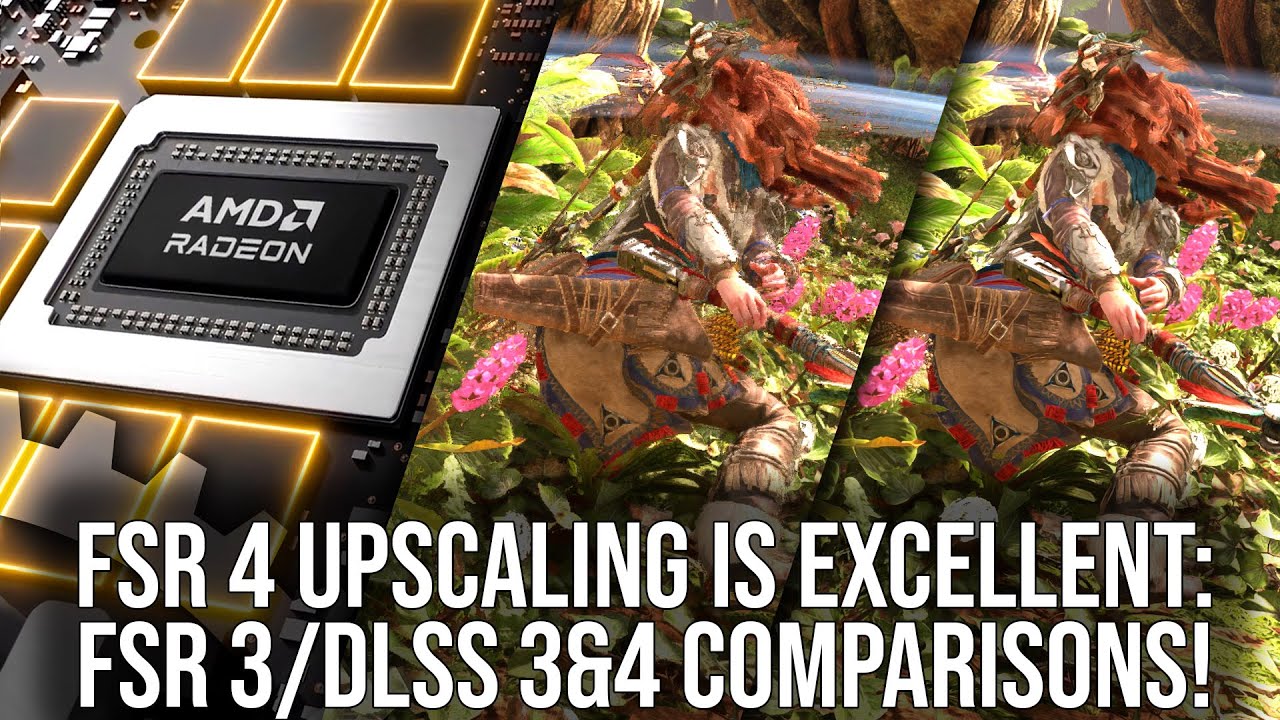The video reviews AMD’s FSR 4 upscaling technology, highlighting its significant improvements in image quality over FSR 3, particularly in rendering particle effects, transparencies, and anti-aliasing. While FSR 4 shows marked advancements, it still lags behind NVIDIA’s latest DLSS model in detail resolution, making it a compelling but not yet fully competitive option for RDNA 4 GPU users.
The video discusses AMD’s FSR 4, the company’s latest machine-learned graphics technology, which aims to improve upon FSR 3. Currently, FSR 4 is only compatible with RDNA 4 GPUs, and the video highlights the impressive INT8 performance capabilities of these GPUs. It compares the performance of FSR 4 with FSR 3, revealing that FSR 4 is approximately 8% slower on average than FSR 3 when tested on an RX 970 XT at 4K performance mode. The key question posed is whether the enhanced image quality of FSR 4 justifies the performance cost.
The reviewer notes significant improvements in image quality with FSR 4 compared to its predecessor. One major area of enhancement is in the rendering of particle effects, where FSR 4 eliminates ghosting issues that were prevalent in FSR 3. This improvement is exemplified in scenes from “Horizon Forbidden West,” where the fluidity and detail of water surfaces are notably enhanced, showcasing the artistic intent of the game developers more accurately.
Additionally, FSR 4 demonstrates better handling of transparencies and low-motion objects. The reviewer highlights that surfaces rendered with FSR 4 exhibit sharper detail and contrast, contrasting with the hazy appearance of FSR 3. The anti-aliasing capabilities of FSR 4 are also praised, as it reduces pixelation artifacts and enhances the stability of details during motion, which were significant flaws in previous versions of FSR.
When comparing FSR 4 to NVIDIA’s DLSS technology, the reviewer finds that FSR 4 surpasses the older CNN model of DLSS in terms of stability and anti-aliasing, while still falling short of the newer Transformer model in detail resolution. The video emphasizes that while FSR 4 is a significant improvement over FSR 3, it still has room to grow compared to DLSS, especially in scenarios involving intense motion.
In conclusion, the video presents FSR 4 as a substantial leap forward for AMD’s upscaling technology, effectively addressing many of the image quality issues seen in FSR 3. While it may not yet fully match the capabilities of NVIDIA’s latest DLSS model, FSR 4 offers a compelling alternative for RDNA 4 GPU users, demonstrating marked improvements in visual fidelity and performance. The reviewer expresses optimism for the future development of FSR technology, indicating that AMD is on the right track to enhance its image reconstruction capabilities further.
